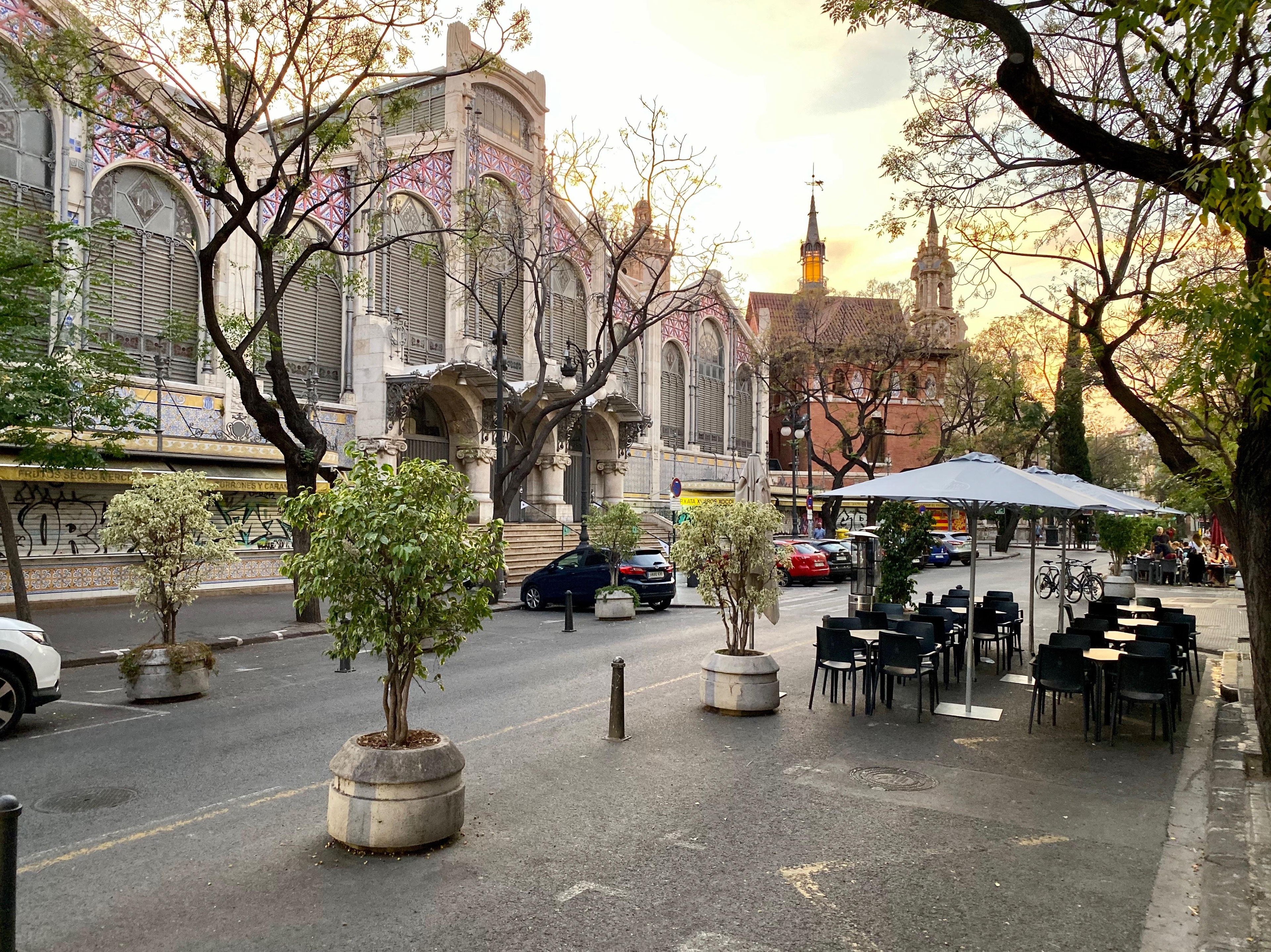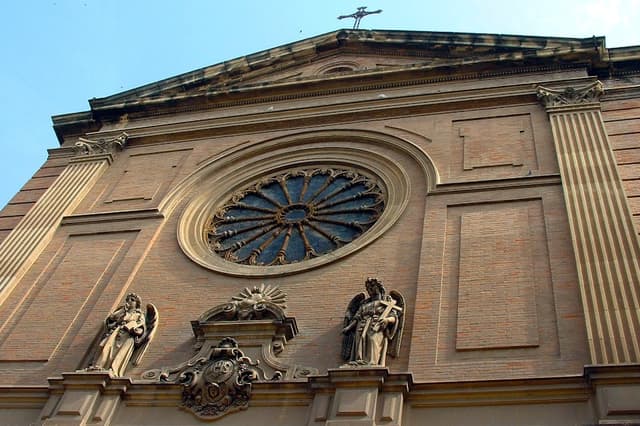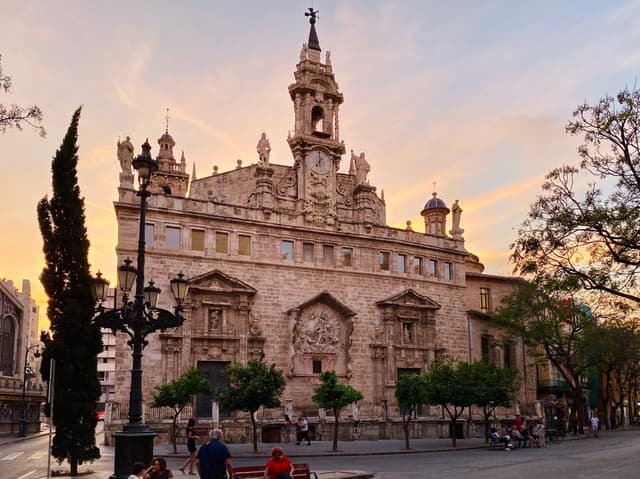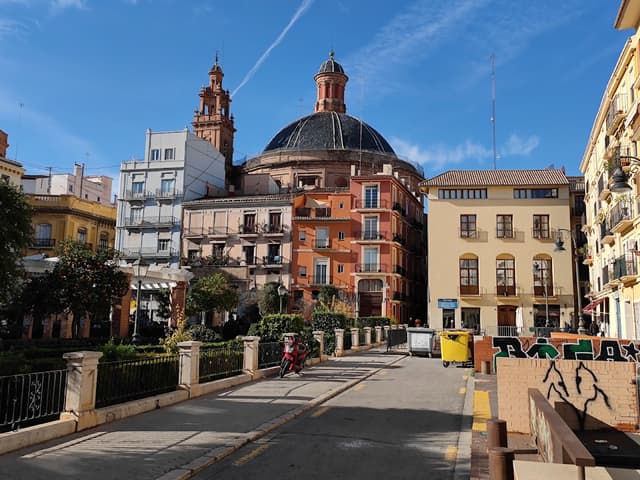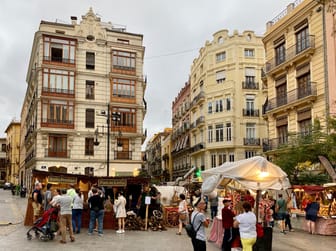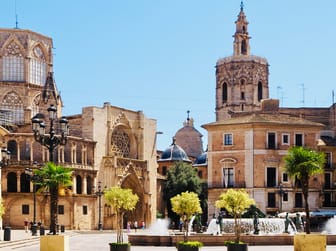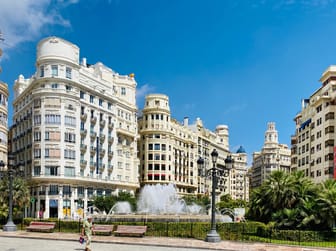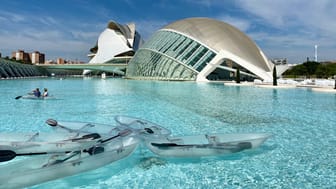EAT + DRINK
SEE + DO
CIUTAT VELLA
Valencians call their historic central district La Ciutat Vella. The Old City, as the 1st district's name translates in Valenciano (the local language similar to Catalan), is comprised of 6 neighborhoods or barrios: El Carme, La Seu, La Xerea, Sant Francesc, El Mercat, and El Pilar.
Map creator: Mike Hall on Behance.com
Always check hours and closure days. Keep in mind that Spanish days start later—many sites don't open until 10 am—but markets open (and close) early. Rearrange to suit individual needs.
Focus on El Mercat, the market neighborhood of La Ciutat Vella, along with residential El Pilar.
El Mercat
Valencia's fertile land and seaport have fostered agriculture and trade, and this neighborhood has long been the prime hub of commerce. Since the time of the Moors, the area around the Market has served as a buzzing marketplace and trade center.
The Silk Exchange was not only a Valencian Renaissance trade hub but an architectural masterpiece exemplifying this style. Today's fresh produce and crafted goods are sold in the lively Mercat Central building that serves as a key example of Valencian Art Nouveau.
Mercat Central
✨ MUST-SEE HIGHLIGHT: Visit the food stalls of Mercat Central.
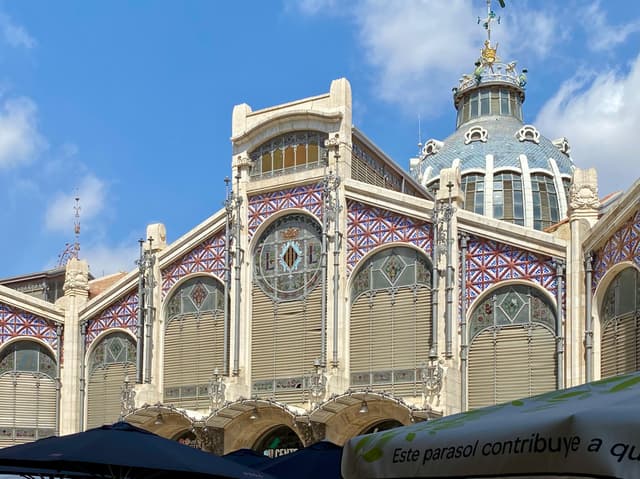
Mercat Central
@aligiaudrone
Upon entering Valencia's Central Market, the largest fresh produce market in Europe, my eye was first drawn upward into the light-filled dome of this vast volume. My nose, filled with scents of land and sea, quickly drew my attention down to the vendors who proudly display an extensive variety of fresh foods and products from this subtropical region with enthusiasm.
Built in 1914 during the Valencian Art Nouveau period, Mercat Central bustles daily with shoppers, where piles of produce and paella pans have replaced the sacks of silk once sold across the street at La Lonja. Each morning, an extensive variety of fresh foods and crafted products arrive from this subtropical region.
My eye was first drawn to the array of paella pans, some the diameter of truck tires, which hung for sale in the front plaza. Curious to see inside, we stepped into the vast, airy volume framed in iron and wood and decorated in colorful ceramics to navigate aisles of bustling stalls.
Throughout the market, vendors called out in Spanish and Valenciano. We wove between colorful stands of fruits and vegetables, cheeses, spices, nuts, olives with hanging legs of jamón at one end, icy basins covered in fish and seafood at the other.
The selection was beyond any of my regular trips to the grocery store or farmer's market at home. The quality was only equal to the “organic” labels sold in our high-end Californian markets. But this was the Valencian standard for quality at fair prices the people expect in this fruitful land.

Details
Across the street, the Silk Exchange was built as the center for all commerce in the Renaissance era. Its front three main Gothic facade sections face the market. The entrance is on the opposite side at Plaça de la Companyia, a small plaza with another inviting church view.
La Lonja de la Seda
✨ MUST-SEE HIGHLIGHT: Take a tour of the Silk Exchange.

Silk Exchange (La Lonja de la Seda)
@aligiaudrone
Light streams between a forest of spiraling stone columns. Each support twists upward, branching into a delicate web of ribbed groin vaults overhead. This airy—seemingly weightless—volume exalts Valencia’s commercial hub, unique to its time.
A Renaissance Treasure: Valencia’s hub of commerce during the 15th-century silk trade boom—
As a prime trade point on the Mediterranean, the new, more glorious Silk Exchange was built to impress. La Lonja de la Seda (La Llotja de la Seda in Valenciano, the regional dialect), named for the city’s most important silk trade and merchant guild, was Valencia’s only building devoted to its prosperous mercantile transactions.
The site combines 4 sections:
THE TRADE HALL: Deals were made in the grand Gothic-style Hall of Columns (Contract Room), which sits on about half the site.
THE TOWER: A large stone archway opens into the tower’s ground level chapel beneath two floors of merchant jails.
THE CONSULATE: The long, narrow more Renaissance-style third section used to administer two levels of maritime and commercial law at the other end.
THE COURTYARD: An enclosed central Courtyard of Orange Trees completes the site’s rectangular shape. Trees burst with Valencian oranges as we walked along garden pathways.

Details
Basílica del Sagrat Cor de Jesús
@aligiaudrone
Particular attention is drawn to this lesser-known church standing over the triangular Plaça de la Companyia across from the entrance to the Silk Exchange, La Lonja de la Seda. The interior is typical of the Baroque period.

Details
Facing La Lonja, back at Plaça del Mercat, the Church of Saint John completes the triptych of this triangular plaza, adjacent to Mercat Central. A Baroque clock tower dominates the ornate facade of this view with a stately bell tower on the corner of the opposite side.
Església de Sant Joan del Mercat
@aligiaudrone
The 18th-century Baroque bell-tower church known simply as Santos Juanes resides over the angled plaza. This national treasure actually has 13th-century origins, built atop the foundations of a former Moorish mosque, but was rebuilt after destructive fires.

Details
El Pilar
From Sant Joan, we leisurely strolled through the quiet streets of El Pilar, a mostly residential neighborhood to the west of El Mercat away from the main monuments of Ciutat Vella.
Parròquia de Sant Josep de Calassanç
@aligiaudrone
Joseph Calasanctius church at Plaça de Joan de Vila-rasa is part of a Catholic school in the residential El Pilar neighborhood of Ciutat Vella.

Details
El Carme (El Carmen)
Stroll the narrow medieval streets of Barrio del Carmen, the old quarter between the two medieval tower gates. Visit the museums or walk from plaza to plaza casually peruse street art. Nightlife here is vibrant among its many restaurants, cafes and tapas bars.
La Seu
Barrio de La Seu is named for the cathedral that proudly stands among many other impressive churches and plazas. To continue from El Carmen, cross Carrer dels Cavallers to first stop at the Church of Saint Nicholas tucked away on the left.
Sant Francesc + La Xerea
The spacious Sant Francesc neighborhood on the south end of Ciutat Vella, filled with great restaurants and quaint streets, is home to City Hall. La Xerea (pronounced "shayr-AY-uh”) is a livable neighborhood in the eastern corner of Ciutat Vella packed with understated history.
Beyond the Center
Valencia has so much more to explore beyond Ciutat Vella. Be sure to stroll along the greenspace of Turia Gardens that flows through the city. Shop its other markets. Tour its soccer (fútbol) stadiums. Venture over to its Mediterranean beach communities and out to its nature preserves.
FOLLOW ME
* * *
